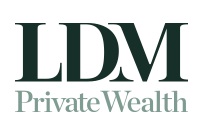Getting superannuation contributions right is an important element of any employers end of financial year period. These tips will guide you on the right path.
Superannuation contributions have been compulsory for three decades in Australia, and as the years have ticked over, the requirements have evolved quite substantially.
Simply put, superannuation – or ‘super’ – contributions are retirement funds that an employer is required to set aside for employees, that are:
-
Over age 18 and earn more than $450 in a calendar month; or
-
Under age 18, earn over $450 per month and work more than 30 hours per week.
Compulsory super contributions are calculated at 10 percent, and 10.5 percent from 1 July 2022, of an employee’s gross wage.
To hear some tips and ideas for dealing with super ahead of the EOFY, we reached out to Julie Slapp, General Manager of Wealth at Flare HR.
To start with, we asked Slapp about how taxation interacts with super.
Tip #1: Make payments on time
From the employee side, while there is a tax payable on super received, it doesn’t get taxed at the same rate as the employee’s income but is rather taxed at its own rate – which is generally 15 percent.
As for the employer, Slapp’s first tip was to make sure that super payments are made on time.
“For the majority of Australians tax is deducted when their employer makes an employer contribution into their superannuation fund and as long as the employer makes the contribution on time, the employer receives a tax deduction,” Slapp said.
For the contributions to be considered ‘on time’, the business operator is required to collect and pay super for the relevant employees within 28 days of the end of the quarter.
If this timeframe is missed, aside from not being able to claim these contributions as a tax deduction, the business will need to pay interest on the funds until they are paid out in full.
Slapp also mentioned that the rules may be different for some entities – including those who are self-employed, making it important to be aware of the rules pertaining to your specific set of circumstances.
Tip #2: Use software year-round to contribute correctly
The next suggestion Slapp shared was for business operators to leverage software systems that automate the reporting process for super contributions, as these systems substantially reduce any margin for error.
Slapp shared the following three ways of using software for super contributions:
-
Through the use of an accounting system that is compliant with the relevant government regulations
-
Through a clearing house
-
Through the super fund itself, if it offers such a service
Further to point two, for small businesses that meet certain criteria, Slapp suggested the ATO’s Small Business Superannuation Clearing House as an option as well.
Additionally, Slapp warned business operators to ensure that contributions are made on the same day that the reporting occurs in order to be effective.
“This lets the super fund match your payment and information and allocate the contribution to the fund member account,” she said.
Tip #3: Stay across the recent super changes
As mentioned earlier, the rules around superannuation are constantly in flux, making it important to be aware of them as they continue to evolve.
According to Slapp, recent changes have been mainly focused on reporting and processing efficiency for both the employer and the super fund itself.
“One of the biggest changes was the introduction of ‘SuperStream’, which created standard protocols to match contribution information and the superannuation payment for all superannuation funds, employers and self-managed super funds,” Slapp said.
For small business owners without the internal bandwidth to stay across these changes, Slapp recommended that they seek out specialised assistance – as failure to comply with the legislation could result in penalties and woes for such organisations.
Additionally, the ATO has an online resource that provides a comprehensive overview of many of the important matters relating to superannuation.
Tip #4: Ensure support for salary packaging
There are various acceptable tax minimisation strategies that employers can help their employees take advantage of, including car lease packaging, fringe benefits or allowing employees to make pre-tax superannuation contributions (super salary sacrificing).
According to Slapp, while employees should always be open to assisting with the deployment of such strategies, it is also important to ensure that they are administered correctly.
“While these strategies can offer substantial after-tax savings to employees and allow you to be an employee of choice, it is important to ensure that you have the right support to establish and maintain these arrangements for your employees and to ensure that the right tax is paid,” Slapp said.
All told, making superannuation contributions as an employer can be tricky, but with the right amount of knowledge, access to compliance software tools, and adequate support systems in place, your business can remain in line with the relevant laws and ensure that your employees are set up to thrive in their current financial year and into their retirement.
Call us on (02) 8277 4605 for help on getting your employee super contributions right.
Source: MYOB May 2022
Reproduced with the permission of MYOB. This article by Benjamin Kluwgant was originally published at https://www.myob.com/au/blog/4-tips-for-getting-superannuation-payments-right-in-2022/
Important:
This provides general information and hasn’t taken your circumstances into account. It’s important to consider your particular circumstances before deciding what’s right for you. Although the information is from sources considered reliable, we do not guarantee that it is accurate or complete. You should not rely upon it and should seek qualified advice before making any investment decision. Except where liability under any statute cannot be excluded, we do not accept any liability (whether under contract, tort or otherwise) for any resulting loss or damage of the reader or any other person.
Any information provided by the author detailed above is separate and external to our business and our Licensee. Neither our business nor our Licensee takes any responsibility for any action or any service provided by the author. Any links have been provided with permission for information purposes only and will take you to external websites, which are not connected to our company in any way. Note: Our company does not endorse and is not responsible for the accuracy of the contents/information contained within the linked site(s) accessible from this page.



